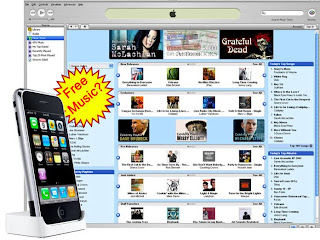
The ONS study also shows that 63 per cent of UK households have a broadband connection, compared to 56 per cent in 2008.
The number of adults going online in 2009 was 37.4 million, a 10 per cent increase from 2008, with the 16-24 age group having the highest level of access at 96 per cent.
However, although the 65-plus age bracket had the lowest level of access at 30 per cent, it showed the highest increase in access of any group at 15 per cent, while 16-24-year-olds registered an increase of only three per cent, as that group approaches saturation.
Men were eight per cent more likely to go online during the past three months – 80 per cent versus 72 per cent for women.
The growth in wireless hotspot availability has also changed the way internet users go online. In 2007 the ONS statistics showed 700,000 people using wireless hotspots to access the web - in 2009 this rose to almost 2.5 million.
The statistics were generated through the ONS Opinions Survey, which recorded 1,200 interviews with adults over 16 living in private households.The company's monitoring service has seen an uninterrupted rise in average speeds since December 2008, and the news comes just after communications watchdog Ofcom slammed service providers over advertised speed claims which it described as " misleading".
"The drop may be small at around 0.1Mbit/s, but it is still a concern for the majority of broadband users as the drop would have been even steeper if it wasn't for the exceptional performance put in by Virgin Media," said Edd Dawson, editor of Broadband.co.uk.
Virgin Media's average speed jumped by around 0.6Mbit/s to 6.73Mbit/s, according to Dawson, undoubtedly helped by the continued uptake .
"Virgin Media's exceptional performance has saved the UK average from an even steeper drop," he said.
O2 and its associated Be internet service came in second with an average speed of 5.31Mbit/s, followed by Orange in third place at 3.41Mbit/s. The average for July across all providers monitored was 4.26Mbit/s.
"It was encouraging to see the results of the Ofcom survey mirroring the accuracy of Broadband.co.uk's previously published reports showing the average speed increasing from 3.6Mbit/s in January to 4.1Mbit/s in April 2009," added Dawson.The tremendous success of HSPA demonstrates the enormous ongoing demand for truly mobile broadband access," said Dan Warren, director of technology at the GSMA.
"HSPA's leading position is not just important to the mobile industry; by using a single technology for mobile broadband services globally we avoid the fragmentation that limits its potential to improve the quality of people's lives."
The system is now deployed by more than 300 networks across 127 countries, and there are nearly 1,500 HSPA-enabled devices now available.
Asia Pacific is leading the charge with almost 50 million live connections, and the region should pass the 56 million mark by September. EMEA is rapidly approaching the 50 million mark, however, and should surpass Asia Pacific with almost 60 million by the end of September.
The US currently has almost 32 million HSPA connections, and the number is expected to rise to nearly 37 million by September.
The growth is showing no signs abating, and it is thought that the number of global connections will exceed 200 million by the first quarter of 2010.
The research found that a lot of this adoption is being driven from outside the 'traditional' mobile industry, as consumer electronics, automotive, energy and utility companies start to explore and understand the possibilities of embedding mobile broadband into products.
Furthermore, thanks to programmes like the digital switchover, governments around the world are making the right spectrum available to support mobile broadband services now and in the future.Businesses have also become increasingly reliant on broadband internet connections due to the growth in hosted applications and software-as-a-service. These have grown to encompass every facet of the business, from end-user applications such as email, office tools and customer relationship management, to back-end systems such as security, backup and web hosting.
Such services can provide a wealth of benefits to an organisation by offering enterprise-class software and management without the need for major capital outlay. However, by delivering these systems over the network, the quality of the connection becomes of paramount importance.
The number of adults going online in 2009 was 37.4 million, a 10 per cent increase from 2008, with the 16-24 age group having the highest level of access at 96 per cent.
However, although the 65-plus age bracket had the lowest level of access at 30 per cent, it showed the highest increase in access of any group at 15 per cent, while 16-24-year-olds registered an increase of only three per cent, as that group approaches saturation.
Men were eight per cent more likely to go online during the past three months – 80 per cent versus 72 per cent for women.
The growth in wireless hotspot availability has also changed the way internet users go online. In 2007 the ONS statistics showed 700,000 people using wireless hotspots to access the web - in 2009 this rose to almost 2.5 million.
The statistics were generated through the ONS Opinions Survey, which recorded 1,200 interviews with adults over 16 living in private households.The company's monitoring service has seen an uninterrupted rise in average speeds since December 2008, and the news comes just after communications watchdog Ofcom slammed service providers over advertised speed claims which it described as " misleading".
"The drop may be small at around 0.1Mbit/s, but it is still a concern for the majority of broadband users as the drop would have been even steeper if it wasn't for the exceptional performance put in by Virgin Media," said Edd Dawson, editor of Broadband.co.uk.
Virgin Media's average speed jumped by around 0.6Mbit/s to 6.73Mbit/s, according to Dawson, undoubtedly helped by the continued uptake .
"Virgin Media's exceptional performance has saved the UK average from an even steeper drop," he said.
O2 and its associated Be internet service came in second with an average speed of 5.31Mbit/s, followed by Orange in third place at 3.41Mbit/s. The average for July across all providers monitored was 4.26Mbit/s.
"It was encouraging to see the results of the Ofcom survey mirroring the accuracy of Broadband.co.uk's previously published reports showing the average speed increasing from 3.6Mbit/s in January to 4.1Mbit/s in April 2009," added Dawson.The tremendous success of HSPA demonstrates the enormous ongoing demand for truly mobile broadband access," said Dan Warren, director of technology at the GSMA.
"HSPA's leading position is not just important to the mobile industry; by using a single technology for mobile broadband services globally we avoid the fragmentation that limits its potential to improve the quality of people's lives."
The system is now deployed by more than 300 networks across 127 countries, and there are nearly 1,500 HSPA-enabled devices now available.
Asia Pacific is leading the charge with almost 50 million live connections, and the region should pass the 56 million mark by September. EMEA is rapidly approaching the 50 million mark, however, and should surpass Asia Pacific with almost 60 million by the end of September.
The US currently has almost 32 million HSPA connections, and the number is expected to rise to nearly 37 million by September.
The growth is showing no signs abating, and it is thought that the number of global connections will exceed 200 million by the first quarter of 2010.
The research found that a lot of this adoption is being driven from outside the 'traditional' mobile industry, as consumer electronics, automotive, energy and utility companies start to explore and understand the possibilities of embedding mobile broadband into products.
Furthermore, thanks to programmes like the digital switchover, governments around the world are making the right spectrum available to support mobile broadband services now and in the future.Businesses have also become increasingly reliant on broadband internet connections due to the growth in hosted applications and software-as-a-service. These have grown to encompass every facet of the business, from end-user applications such as email, office tools and customer relationship management, to back-end systems such as security, backup and web hosting.
Such services can provide a wealth of benefits to an organisation by offering enterprise-class software and management without the need for major capital outlay. However, by delivering these systems over the network, the quality of the connection becomes of paramount importance.




No comments:
Post a Comment